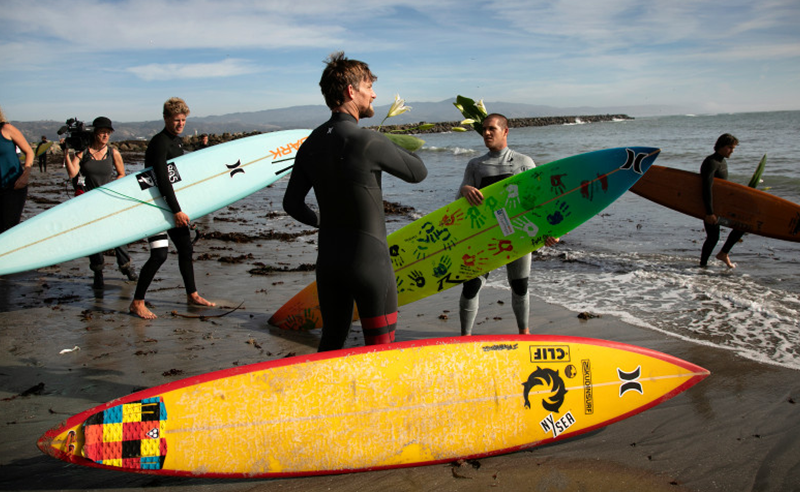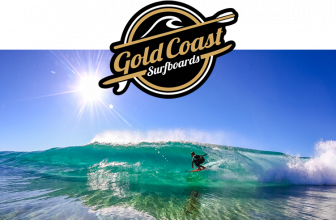
The history of the gun surfboard goes all the way back to 1949. A man named George Downing began shaping redwood boards in his garage in Hawaii.
At this point, not many people were surfing the massive breaks on the North Shore or Maui, as their boards couldn’t handle the waves.
Downing, a man who is now synonymous with the word “legend”, sought out to change the game.
He designed the Hotcurl, a thin 10’ 11” log that is now known as the grandfather of modern day gun surfboards.
It wasn’t until the 1950s that Downing began shaping guns that we now know as modern-style gun boards.
George Downing didn’t just shape guns though, he rode them fast and hard.
He successfully surfed the untouched waves of North Shore and Maui and became one of the first surfers in history to ride waves bigger than 20-feet.
How Did These Boards Become So Popular?
The popularity of these boards arose after the 1954 Makaha International Surfing Championship, where George took how the champion title riding his gun. He also took his gun to Peru and won a few championships there, showing off his skills and new board. Basically, he was gunning through the 1950s and 60s, winning tons of competitions, appearing in legendary surf movies like The Endless Summer, and teaching modern day shapers his ways.
So What Is A Gun Surfboard Exactly?
In terms of their size, they can range from 6’6” all the way to 10’. They are made with extra thickness in comparison to shortboards, which gives riders more stability on larger waves. To the untrained eye, some might mistake them for longboards, though there are a few smaller features that give them away. For one, gun surfboards are narrow in the nose and tail. This gives them the ability to cut deep into the faces of waves using their rails.
Some may refer to the smaller boards as semi-guns, as they share the same characteristics of their larger older brothers, though they don’t have the size. The curves on them are pretty free-flowing, giving riders the ability to transition smooth. Even with the small size, they are definitely built to ride monster waves as well.
Why Did the Gun Surfboard Catch On?
Gun surfboards caught on because they were the only boards that allowed surfers to ride waves once they reached a certain size. Prior to Downing, it was impossible to hit waves over 20’ high. Longboards were too wide at the noses and tails to get enough contact with waves and shortboards were too wobbly to get the proper stability to survive a steep drop.
In a way, gun surfboards were like shortboards. They were created to bust through the ceiling that limited surfers for many years. Unlike shortboards, which were designed to change the trick and maneuver possibilities, gun surfboards were made to conquer the beasts of Mother Nature.
Why Should I Add a Gun Surfboard To My Quiver?
You should only add a gun to your quiver if you’re brave enough to take on the biggest waves out there Nobody under an expert surfer should realistically have a gun in their quiver. You also have to be an expert paddler. At some point, you’ll be paddling into waves going 30MPH. If you are brave and willing though, a gun will be your one-way ticket to a feeling like no other. Need we say anything else?
Final Thoughts?
The gun surfboard is synonymous with big wave culture. Thanks to George Downing, men and women surfers everywhere are now able to go where surfers in the past were never able to go before. You can really never prepare yourself for coming in contact with a wave that is 10x taller than you. You truly just have to take that drop and hope for the best. For the expert surfers out there, we hope that you can now surf your guns with a bit more context and respect for where they came from. Good luck!





